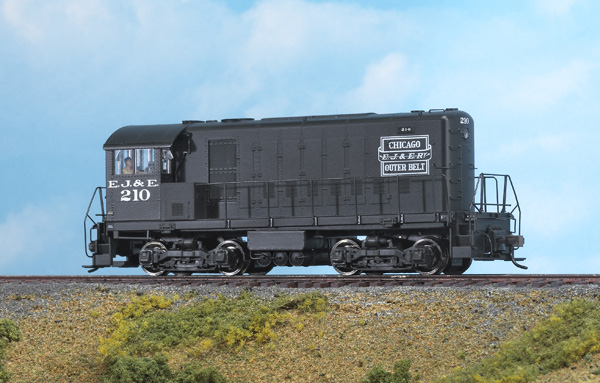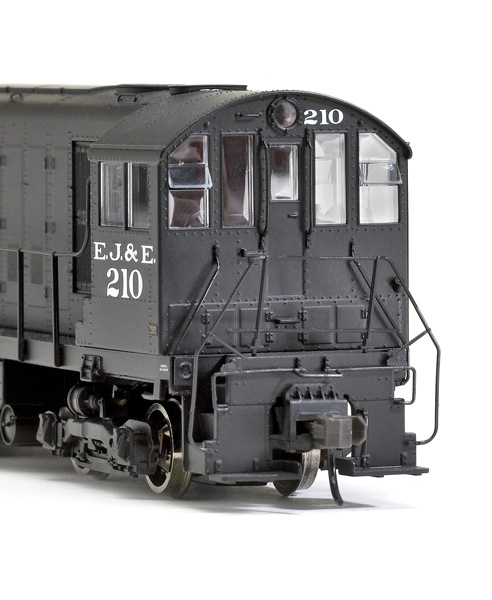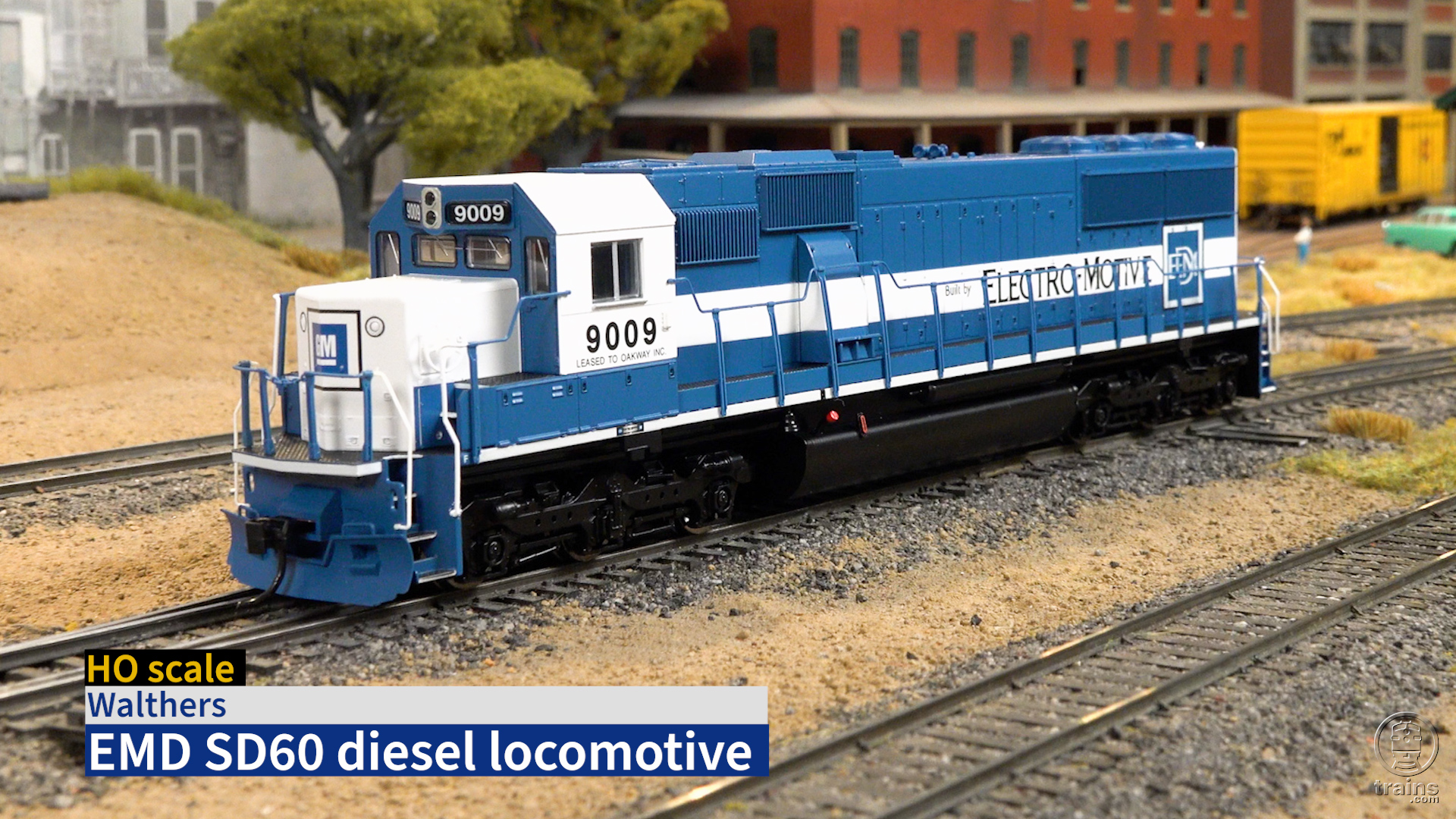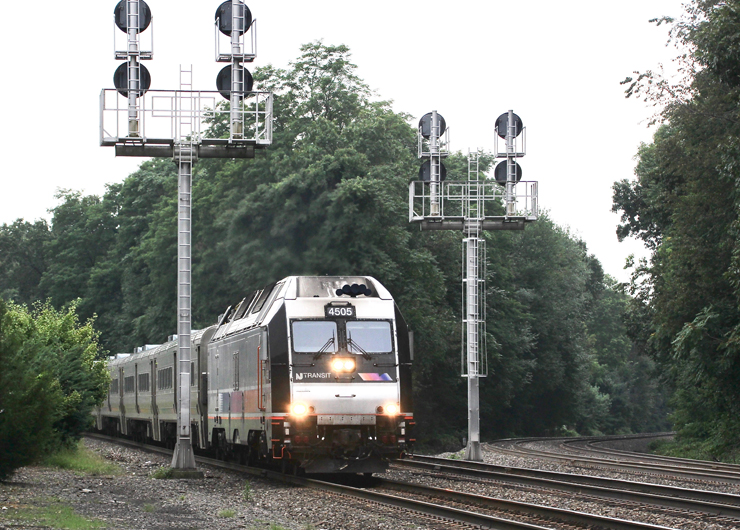This ready-to-run model has a powerful, smooth-running, dual-flywheel drive fitted into a superbly detailed styrene body. The unit has numerous individually applied detail parts and a set of well-proportioned flexible acetal plastic railings. The cab includes clear window glazing and there’s an engineer and control stand inside.
Prototype. Alco introduced the HH600 (high hood, 600-hp) in 1931. The Atlas model is a later HH600/660 that debuted in 1938 after Alco hired industrial designer Otto Kuhler to clean up the switcher’s appearance. These later engines had rounded hood corners.
By varying the maximum rpm of its new 538 engine, Alco offered this locomotive in both 600-hp and 660-hp versions that shared identi-cal hoods. Interestingly, all of the high-hood units had an unusual machinery layout that was reversed compared to most other switchers. These units had their cab and generator at opposite ends, with the radiators mounted in the hood sides close to the cab.
Alco built 78 HH600s and 43 HH660s between 1932 and 1940. They rode on Alco’s Blunt trucks and were easy to service in the field, so some operated in industrial switching roles for nearly 40 years.
This model follows Atlas’ typical construction, starting with a body shell made up of several interlocking detailed styrene castings. The high hood, cab, and cab interior snap-lock into the running board assembly, and numerous details press-fit into holes molded into the larger parts.
The Alco’s mechanism also follows Atlas’ proven design. It has a heavy cast zinc-alloy frame with a five-pole can motor and turned brass flywheels mounted above the fuel tank. Its Blunt switcher trucks have enclosed gearboxes, and both trucks are retained with snap-on clips. An acetal plastic universal joint connects each truck to the
motor. A set of eight safety chains are included for user installation between the trucks and the frame.
The switcher has RP-25 contour blackened nickel-silver wheels that match the National Model Railroad Association standards gauge. All eight wheels are driven and all pick up current.
Flexible wires and plugs connect both trucks and the headlights to the printed-circuit board that controls the directional lights. The PC board also includes an 8-pin socket and jumper plug for easy installation of a Digital Command Control (DCC) decoder. There’s enough space inside the tall hood to mount a small DCC decoder on top of the mechanism.
Our sample came with body-mounted Accumate magnetic knuckle couplers, but other couplers can be substituted easily. The model’s coupler height is correct per NMRA standard S-2.
The Elgin, Joliet & Eastern sample came neatly painted black with sharp, white lettering typical of most early switchers. Five
other appropriate early paint schemes are also available in two numbers each.
Overall, this new HO diesel switcher delivers excellent detail, a quality finish, and a smooth-running mechanism. Since it spans the steam-to-diesel transition period, it can be useful in many different roles.
Price: $149.95
Manufacturer
Atlas Model Railroad Co.
378 Florence Ave.
Hillside, NJ 07205
www.atlasrr.com
Road names: (two numbers each) HH600: Elgin, Joliet & Eastern; Erie; New York, New Haven & Hartford HH660: Maine Central; Milwaukee Road; Southern Pacific
Features
DCC socket
Directional, constant headlights
Dual flywheel drive
Engine weight: 7.5 oz.
Eight-wheel electrical pickup
Five-pole can motor
Minimum radius: 15″
Nickel-silver RP-25 contour wheels

















I model the 1930s on a small switching layout and this loco is just what was needed. My engine runs great right out of the box no tweeking needed. Only one thing the CHAINS! I think atlas is trying drive us old guys with big fingers nuts! Great job atlas .
It looks absolutely great.
Something about the looks of this unit intrigued me. Kind of a look only its mother would love, but there is just something about it. I model PRR and the Reading and did some research. I found that the Reading Railroad had two HH900s, Nos 40 and 41. Tried to find an undec but they were gone immediately. I was going to just wait for sound units but ran into a great deal on a Maine unit at a train show I just couldn't turn down.
This a great running model with excellent detail. Now if I could only get those @$%^*& chains on the trucks. Took a hour to get 4 of them on and had to take a break. The older I get the smaller these parts look. Hey Atlas, I'll pay an additional $10 for the unit, just put these things on at the factory, like my Proto 2000 steam units.
Still this is a great running and looking unit. I used a TCS MC2 decoder and a 1 1/4" harness and it works great. I have some repainting, and hopefully down the road, a DCC sound drop-in for this unit may come out for it or one from another loco application that may fit.
This is a very nice looking and running model. I am especially impressed with the low DC starting voltage.
The only disappointment is that the model is only about 1/2 as heavy as other Atlas Alco switchers. I'm planning on trying to fit a sheet of lead inside the roof of the hood, since I am not going to add any electronic components.
Has anyone had any luck in installing those safety chains on the trucks? I notice they weren't installed on the review sample. Also, note that the review sample isn't assembled correctly – the front of the body isn't down all the way on the frame which makes the front footboards too high above the rails.
I got one of the Milwaukee Road units. I am looking forward to more paint schemes.
I hope ALCO didn't pay Otto Kuhler for his design. Only a mother and an industrial designer could love these looks.
Atlas did a nice job though. Quality fit and finish. 1 mph. Excellent! Too bad there weren't any Great North West customers or this would be in one of my "pre-layout" boxes.
This model runs very well. It is very easy to put a DCC decoder into, I used a TCS DP2X. The fit is a little tight, but it will fit. This is an extremely smooth running locomotive. My only wish is that it came with genuine KADEE couplers. (My personal preference is for a scale size couple also.) I would reccoment this locomotive for anyone who wants a nice small switcher.
I wish they would make one in LVRR colors.
I look forward to Atlas's decorating this loco for the Boston & Maine with stripes like those on the Maine Central switchers. I know a lot of people want these locos with DCC and sound; I'm hoping for a plain DC version.
I also installed a TCS DP2X. Seems to be the best fit given the limit space.
Looking good, nice job. I am one of the bicentennial nuts, so a bicentennial in American Cast Iron Pipe Co. would fit my bill. Thank you Atlas for atleast building the locomotive so that we can paint it.
I had the same experience as Mathew Thompson. I initially tested the engine with my Digitrax Zephyr set to address "0" and got a short.
I emailed Atlas customer service on Sunday evening and received a reply around 9:30AM on Monday with the information that the engine would not run on DCC without a decoder. Excellent service by Atlas; I do suggest they include that information in future runs of the engine.
I installed a Digitrax DH165IP and the engine runs well with it.
I agree with the positive comments. I installed a Digitrax DZ123. It is an easy fit.
One caution – the DC version will not run on a DCC layout and there is nothing in the accompaning literature that provides this information. Since I normally test an engine's running ability before installing a decoder, I thought I had a bad engine.
Once a decoder was installed, my engine ran very well.
Great model, a very usefull small engine, really a beauty….